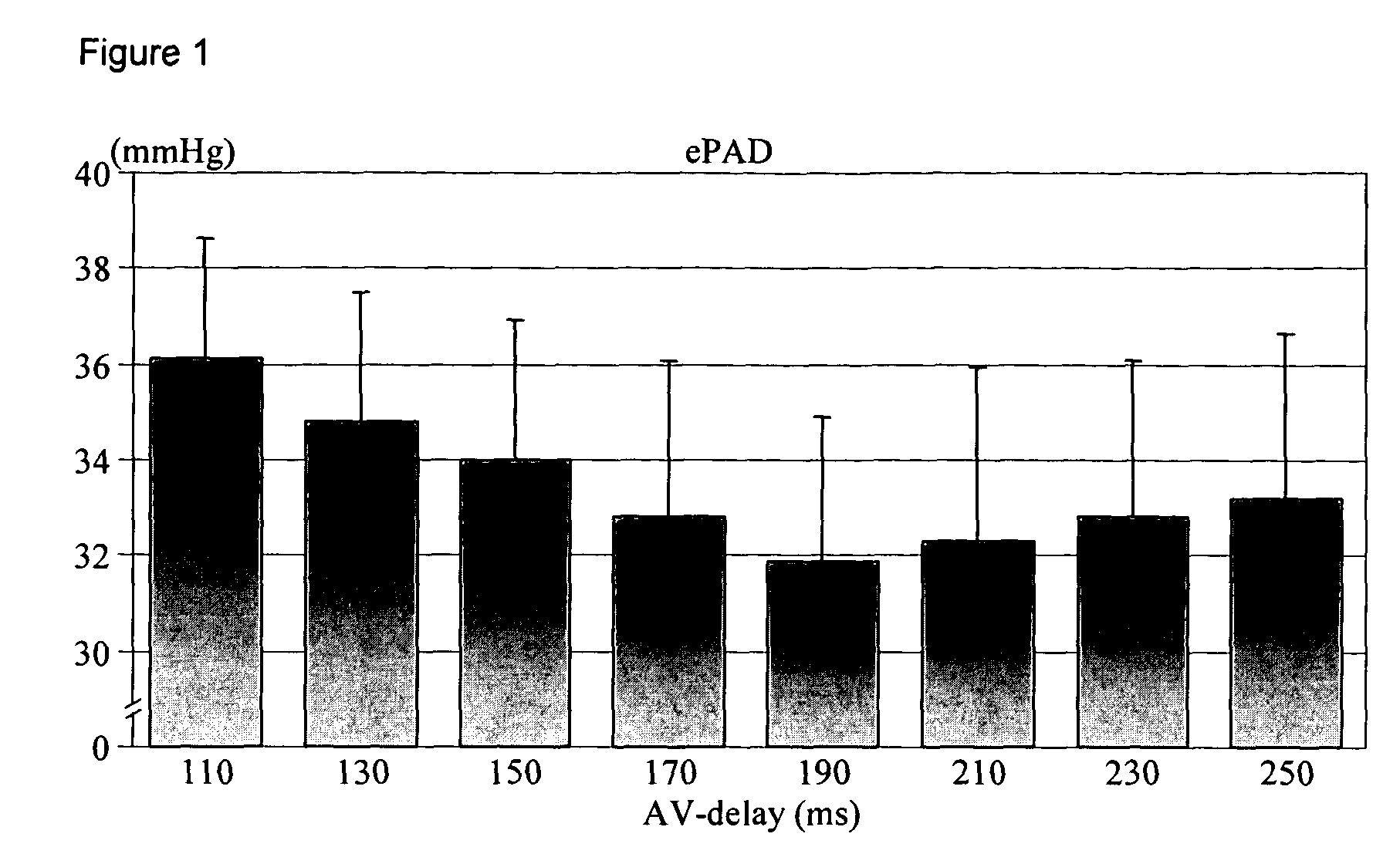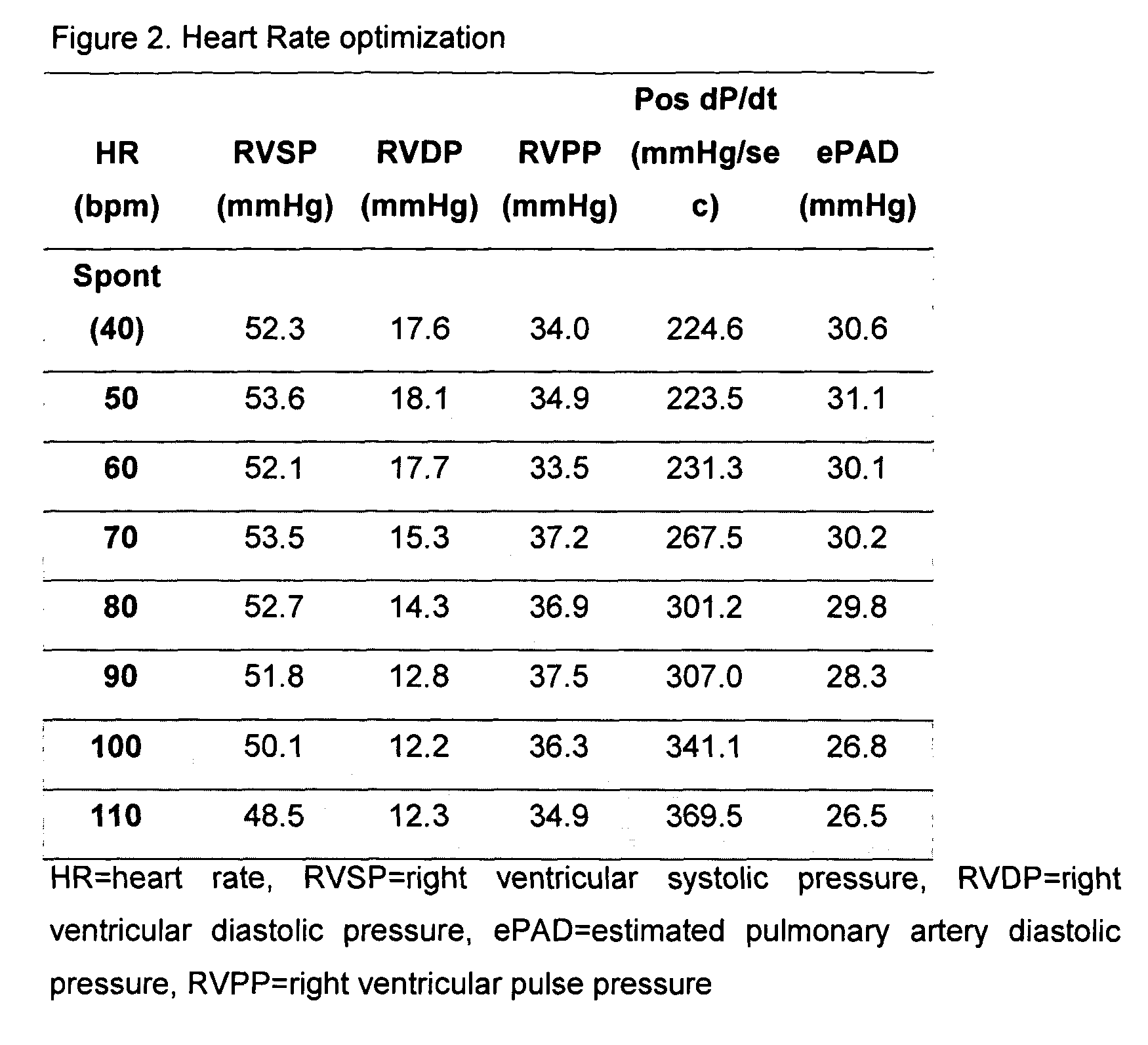Apparatus and method for hemodynamic-based optimization of cardiac pacing
a technology of hemodynamic optimization and algorithm, applied in the field of implantable medical devices, can solve the problems that the hemodynamic test that was determined as optimal during the acute hemodynamic test did not turn out to be optimal, and achieve the effect of improving the left ventricular filling pressure and optimal av delay
- Summary
- Abstract
- Description
- Claims
- Application Information
AI Technical Summary
Benefits of technology
Problems solved by technology
Method used
Image
Examples
Embodiment Construction
[0015] The present invention was tested in the therapy for a 58 year-old male patient having cardiovascular risk factors that included cigarette smoking, hypertension and a family history of coronary artery disease and heart failure. In 1993 the patient suffered from an infero-lateral myocardial infarction (MI) that was treated by thrombolysis. Post infarction echocardiography revealed a moderately enlarged left ventricle (LV) with a left ventricular ejection fraction (LVEF) of 45%. The patient underwent complete revascularization by coronary artery by-pass grafting (CABG) in August 1994. In the post surgery period the patient developed symptoms of severe heart failure and the LVEF decreased to 15-20%. Medical therapy with diuretics, enalapril, carvedilol, ASA, pravastatin and digoxin led to significant clinical improvement. In May 1999 the patient was included in a clinical trial conducted on behalf of Medtronic, Inc. of Minneapolis, Minn., U.S.A. (for the Chronicle® implantable he...
PUM
 Login to View More
Login to View More Abstract
Description
Claims
Application Information
 Login to View More
Login to View More - R&D
- Intellectual Property
- Life Sciences
- Materials
- Tech Scout
- Unparalleled Data Quality
- Higher Quality Content
- 60% Fewer Hallucinations
Browse by: Latest US Patents, China's latest patents, Technical Efficacy Thesaurus, Application Domain, Technology Topic, Popular Technical Reports.
© 2025 PatSnap. All rights reserved.Legal|Privacy policy|Modern Slavery Act Transparency Statement|Sitemap|About US| Contact US: help@patsnap.com



